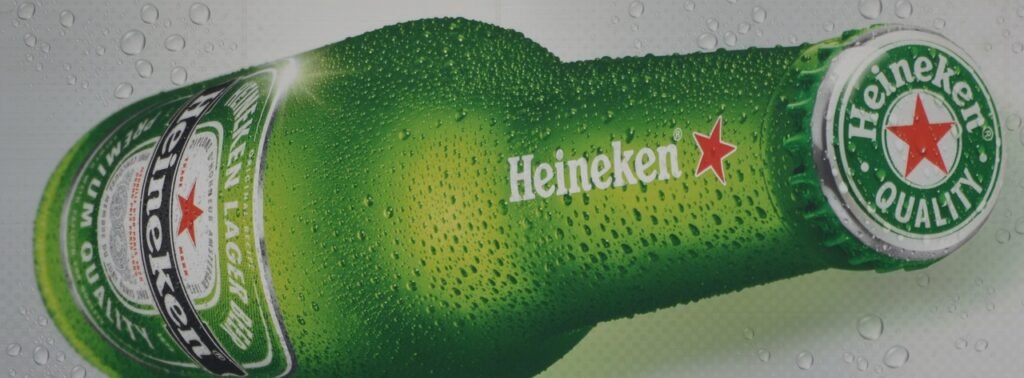The Europe-wide Digital Transformation of Heineken strategic sourcing and procurement of materials has been a significant factor in achieving its sustainability goals. Heineken’s target as far as sourcing is concerned is to be using 100% sustainable barley and hops by 2030. This was a key aspect of Heineken’s overall carbon reduction targets, impacting everything from water use to labour practices. Heineken has pledged to make its entire value chain fully carbon neutral by 2040 to support its strategic goal to ‘Brew a Better World’ as enshrined in the company’s mission statement. Accordingly, to the stellar CEO, Dolf van den Brink, we’ll continue to grow sustainably staying close to Heineken’s values and culture, exploring new ways to innovate, create efficiency and reduce costs. At the same time stay curious, learn, and create new ways forward.

Sustainably improved waste management in packaging
Heineken has leveraged on design innovation to reduce emissions by adopting a ‘reduce and replace’ approach regarding the procurement of glass, aluminium, plastic and paper. This sustainability efforts have largely been driven by a very successful digital transformation programme which transformed Heineken’s European supply chain into four key areas:
- Simplifying the complexity of its product and packaging
- Leveraging its network of operating companies
- Improving and harmonising its way of working
- Designing low-carbon footprint operations
According to company sources, the first year of the transformation delivered some significant results, which include a 52% reduction in the volume of unique bottles used by the company, and a 50% reduction in the amount of secondary packaging used.
Successful sustainable carbon reduction in production
The company has expanded its strategy to work with suppliers to develop low-carbon production practices by growing its low-carbon farming programme from 8 to 15 countries and is aiming at 200 pilot farms by 2025. The programme is designed to cut the use of fertilisers, and to use regenerative and conservation agriculture techniques that enrich soil health and increase its ability to capture carbon.
After 2027, the most successful approaches will be scaled up and are planned to be adopted by around 10,000 farmers. The company then plans to share its findings and by 2030 equip and train more than 10,000 farmers and sourcing partners so they can adopt the best methods. The Heineken Low Carbon Farming program will empower their supply chain partners and farmers to explore new techniques that allow CO2 reduction and sequestration.
The Heineken’s emission reduction roadmap although supported by digitalization, was a combination of deploying technology and adopting new business practices that prioritize sustainability. This approach not only contributes to environmental goals but also drive innovation, reduce costs and enhances the Heineken brand reputation. Reducing these emissions can be complex due to their indirect nature and the need for cooperation in data sharing across the value chain. According to Greenhouse Gas Protocol, Scope 3 carbon are emissions from assets not directly owned or controlled by the reporting organization but has indirectly impact in its value chain.
